SIP-adus Workshop 2022
Abstracts & Speakers List
- Oct. 11 [Tue.]
- Opening Session
- Regional Activities
- Human Factors
- Impact Assessment
- Japanese Government
- Panel Discussion
- Oct. 12 [Wed.]
- Dynamic Map
- Connected Vehicles
- Cybersecurity
- Safety Assurance
- Service and Business Implementation
- Closing
- Impact Assessment
- Diffusion of automated driving vehicles (ADs) is considered to help to reduce traffic accidents, alleviate traffic congestion, resolve the driver shortage, and resolve other social problems. On the other hand, ADs are necessary to be installed with adequate consent by people and society. Panelists address views and analysis on the issues, challenges, estimations or expectations related to social impact of AD technologies in this session.
Moderator
-
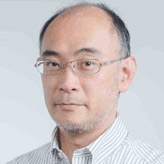
Takashi Oguchi
Director
Advanced Mobility Research Center, Institute of Industrial Science
The University of Tokyo
JapanProf. Oguchi, born in Tokyo 1964, graduated Department of Civil Engineering, Faculty of Engineering, the University of Tokyo (UTokyo) in 1988 and got Ph.D from Graduate School of Engineering of UTokyo in 1993. After joining to Nissan Motor Co. Ltd., he moved to Tokyo Metropolitan University, and promoted to Professor in 2007. He moved to Institute of Industrial Science (IIS) of UTokyo in 2011 and assigned to director of Advanced Mobility Research Center (ITS Center) of IIS, UTokyo, in 2018. He is also a member of Mobility Innovation Collaborative Research Center (UTmobI) started in July 2018 in the university, and is in charge of education for the department of civil engineering at UTokyo. His major research field is Traffic Engineering and Traffic Management and Control including advanced traffic signal control, advanced highway network traffic management systems, integrated transport and mobility system design including automated vehicles, harmonized design of infrastructure facilities and hierarchical road transport system. He also serves as the chair of Business Promotion Working Group of Japanese national project SIP-adus (Cross-Ministerial Strategic Innovation Promotion Program in the Innovation of Automated Driving for Universal Services).
Speaker
-
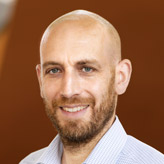
Tobias Kuhnimhof
Head of Department
Institute of Urban and Transport Planning
RWTH Aachen University
GermanyTobias Kuhnimhof heads the Institute for Urban and Transport Planning at RWTH Aachen University. He holds degrees in transportation engineering and applied cultural science from the KIT (Karlsruhe Institute of Technology, Germany) and doctorate degree in the field of travel demand modelling. From 2010 to 2014, he was a research coordinator for the Institute for Mobility Research (ifmo), a research establishment of the BMW group. From 2014 to 2019 Tobias Kuhnimhof headed the department for passenger transport at the Institute for Transport Research of the German Aerospace Center (DLR) in Berlin. He is a member of several national and international committees on measuring, modelling and forecasting travel.
-
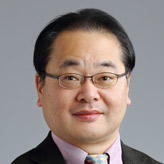
Hiroaki Miyoshi
Professor
Graduate School of Policy and Management
Doshisha University
JapanHiroaki Miyoshi is the Professor at Graduate School of Policy and Management, and Faculty of Policy Studies, Doshisha University.
He had worked at a major private think tank company for ten years, conducting researches and making policy recommendations on a broad range of issues as a researcher, before joining Doshisha University in 2003.
He is now conducting researches related to automated driving from the perspective of economics. He was one of the leaders in a SIP-adus research project and involved in the researches including diffusion simulation of automated drivings, estimation of automated driving’s effectiveness in reducing traffic accidents, and automated driving’s impacts on Japanese industry.
His research interests include public economics and transport economics. His publications include Technological Innovation and Public Policy: The Automotive Industry (Palgrave Macmillan, 2011, co-edited with M. Kii), Have Japanese Firms Changed?: The Lost Decade (Palgrave Macmillan, 2010, co-edited with Y. Nakata), Knowledge Asset Management and Organizational Performance (Hakuto-Shobo Publishing Company, 2009, co-edited with Y. Shozugawa, in Japanese), Technological Innovation in the Automotive Industry and Economic Welfare (Hakuto-Shobo Publishing Company, 2008, co-edited with M. Tanishita, in Japanese). -
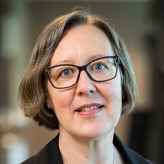
Satu Innamaa
Principal Scientist
Mobility and transport
VTT Technical Research Centre of Finland Ltd.
FinlandDr. Satu Innamaa works as Principal Scientist at VTT Technical Research Centre of Finland Ltd. She has over 20 years of experience in research on transport and mobility, connected and automated driving, impact and quality assessment, and user needs. Satu has wide experience in field operational tests and other evaluations. Currently, she is the Methodology sub-project leader for Hi-Drive and the European co-leader of Trilateral (EU-US-Japan) Impact Assessment sub-group for Automation in Road Transportation.
-

Tom Alkim
Strategic Advisor
Connected & Automated Mobility
MAPtm consultancy
NetherlandsTom Alkim is Strategic Advisor Connected & Automated Mobility at the Dutch company MAPtm, which provides consultancy, digital and operational services in the ITS domain. He has almost 25 years of experience in the public sector, working in the field of dynamic traffic management, C-ITS and Connected & Automated Mobility for Rijkswaterstaat, Dutch Ministry of Infrastructure & Water Management and the European Commission, Directorate General Research & Innovation. He was part of the core team that was responsible for the Declaration of Amsterdam and the European Truck Platooning Challenge during the Dutch EU presidency in 2016. Tom is an International Member on the Transportation Research Board (TRB) Standing Committee on Vehicle-Highway Automation (ACP30).
-
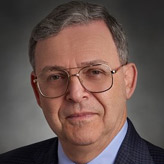
Steven Shladover
Research Engineer (Retired)
California PATH Program
University of California, Berkeley
The United States of AmericaDr. Steven Shladover has been working on development and assessment of driving automation systems for fifty years. After ten years at MIT, he worked eleven years in Silicon Valley and 28 years at the California PATH Program of the University of California, Berkeley. He has led projects developing and testing automation systems for light and heavy duty vehicles, simulating the transportation system impacts of large-scale deployment of these systems, and working on the related policy and regulatory challenges. He chaired the TRB committees on ITS and vehicle-highway automation and is active in the development of technical standards at ISO and SAE.

